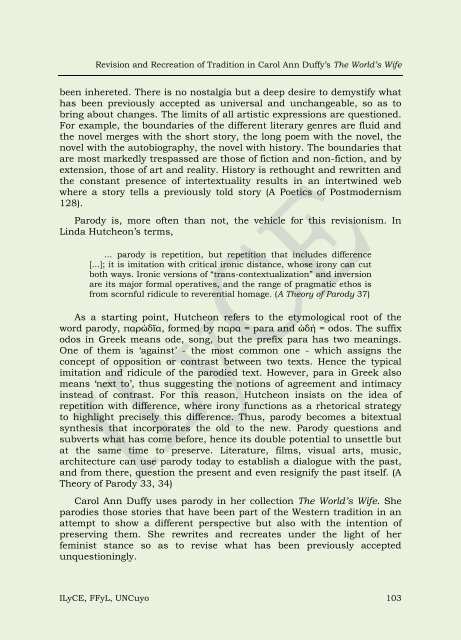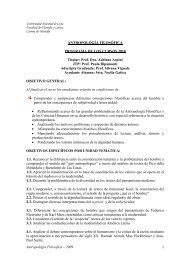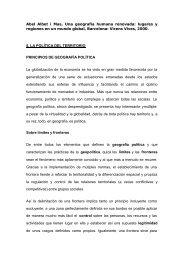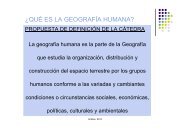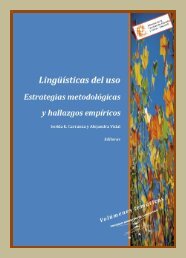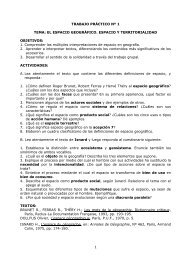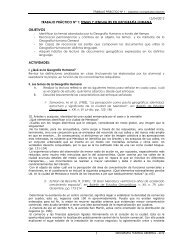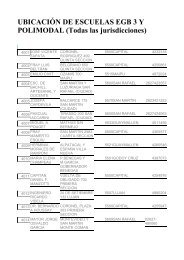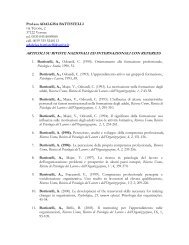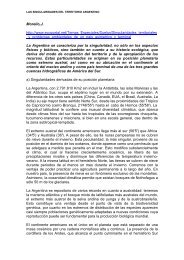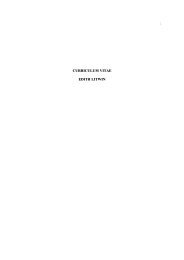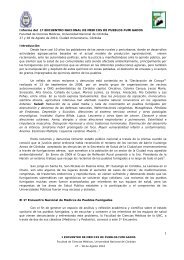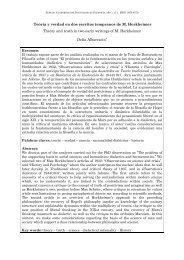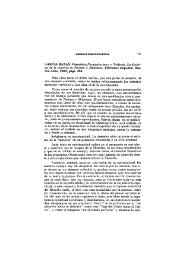o guardar revista - Facultad de FilosofÃa y Letras - Universidad ...
o guardar revista - Facultad de FilosofÃa y Letras - Universidad ...
o guardar revista - Facultad de FilosofÃa y Letras - Universidad ...
Create successful ePaper yourself
Turn your PDF publications into a flip-book with our unique Google optimized e-Paper software.
Revision and Recreation of Tradition in Carol Ann Duffy’s The World’s Wifebeen inhereted. There is no nostalgia but a <strong>de</strong>ep <strong>de</strong>sire to <strong>de</strong>mystify whathas been previously accepted as universal and unchangeable, so as tobring about changes. The limits of all artistic expressions are questioned.For example, the boundaries of the different literary genres are fluid andthe novel merges with the short story, the long poem with the novel, thenovel with the autobiography, the novel with history. The boundaries thatare most markedly trespassed are those of fiction and non-fiction, and byextension, those of art and reality. History is rethought and rewritten andthe constant presence of intertextuality results in an intertwined webwhere a story tells a previously told story (A Poetics of Postmo<strong>de</strong>rnism128).Parody is, more often than not, the vehicle for this revisionism. InLinda Hutcheon’s terms,... parody is repetition, but repetition that inclu<strong>de</strong>s difference[...]; it is imitation with critical ironic distance, whose irony can cutboth ways. Ironic versions of “trans-contextualization” and inversionare its major formal operatives, and the range of pragmatic ethos isfrom scornful ridicule to reverential homage. (A Theory of Parody 37)As a starting point, Hutcheon refers to the etymological root of theword parody, παρώδïα, formed by παρα = para and ώδή = odos. The suffixodos in Greek means o<strong>de</strong>, song, but the prefix para has two meanings.One of them is ‘against’ - the most common one - which assigns theconcept of opposition or contrast between two texts. Hence the typicalimitation and ridicule of the parodied text. However, para in Greek alsomeans ‘next to’, thus suggesting the notions of agreement and intimacyinstead of contrast. For this reason, Hutcheon insists on the i<strong>de</strong>a ofrepetition with difference, where irony functions as a rhetorical strategyto highlight precisely this difference. Thus, parody becomes a bitextualsynthesis that incorporates the old to the new. Parody questions andsubverts what has come before, hence its double potential to unsettle butat the same time to preserve. Literature, films, visual arts, music,architecture can use parody today to establish a dialogue with the past,and from there, question the present and even resignify the past itself. (ATheory of Parody 33, 34)Carol Ann Duffy uses parody in her collection The World’s Wife. Sheparodies those stories that have been part of the Western tradition in anattempt to show a different perspective but also with the intention ofpreserving them. She rewrites and recreates un<strong>de</strong>r the light of herfeminist stance so as to revise what has been previously acceptedunquestioningly.ILyCE, FFyL, UNCuyo 103


